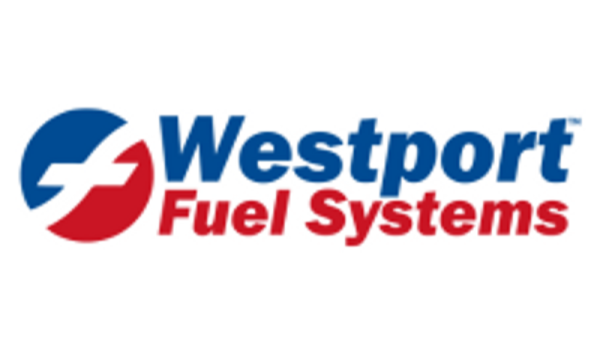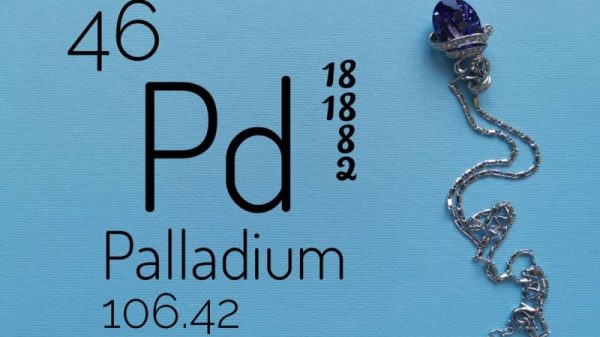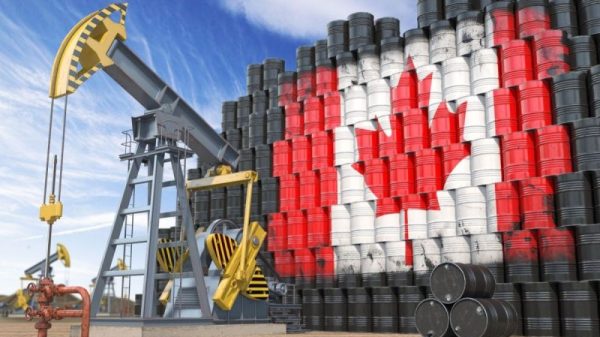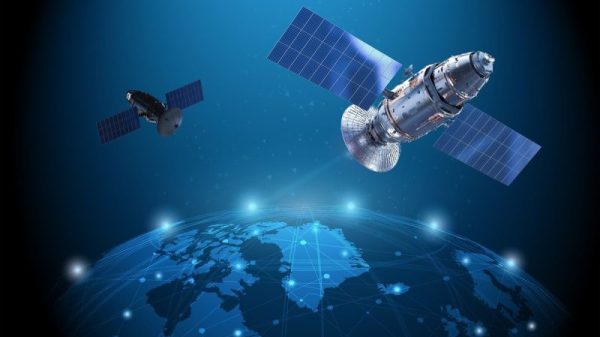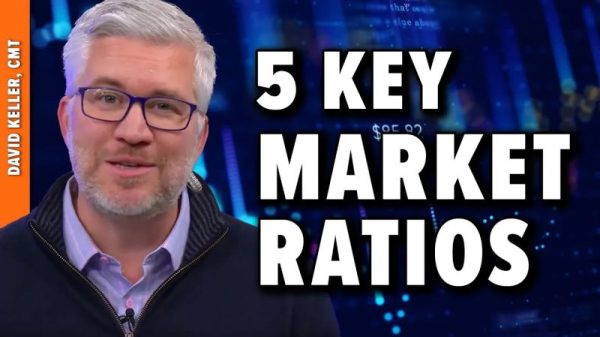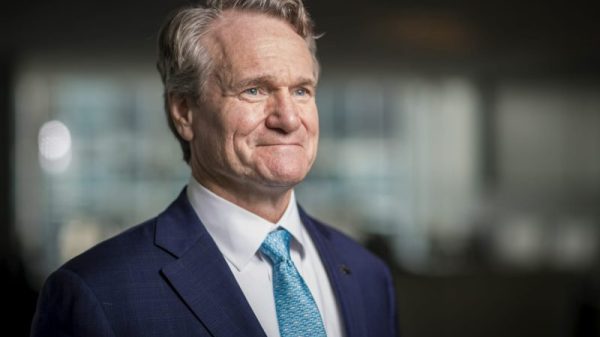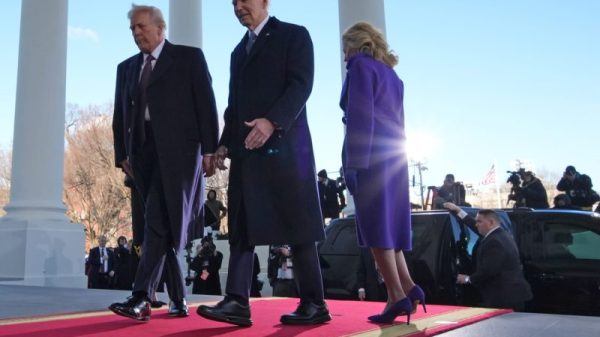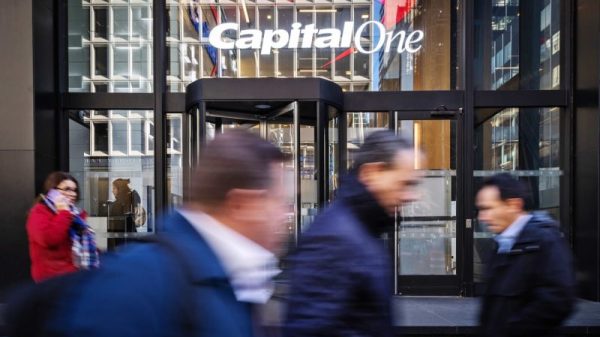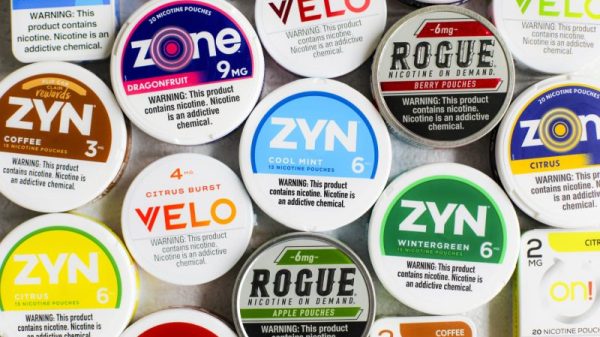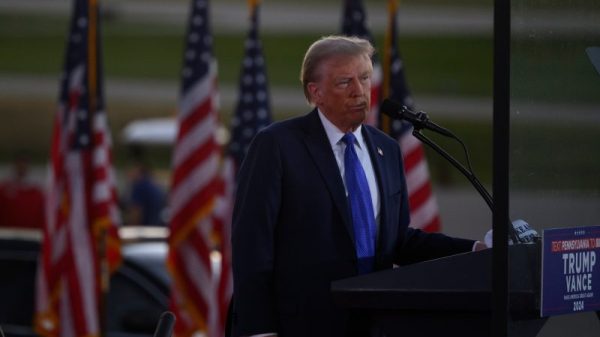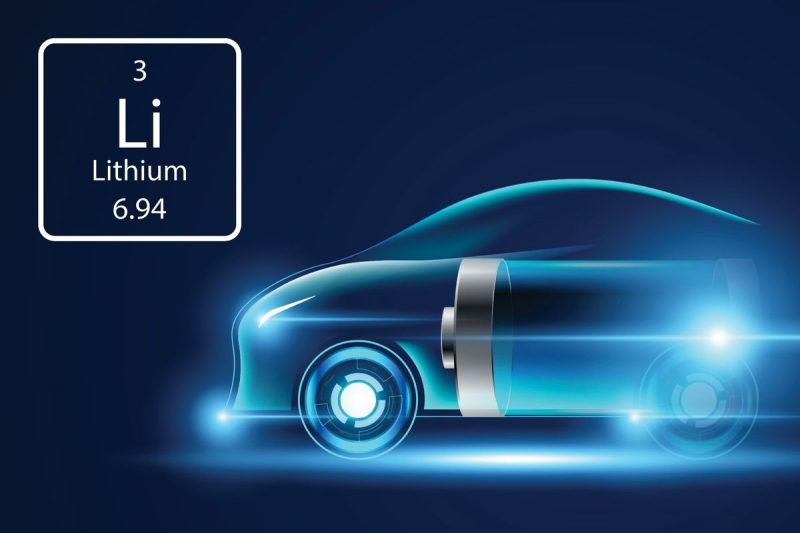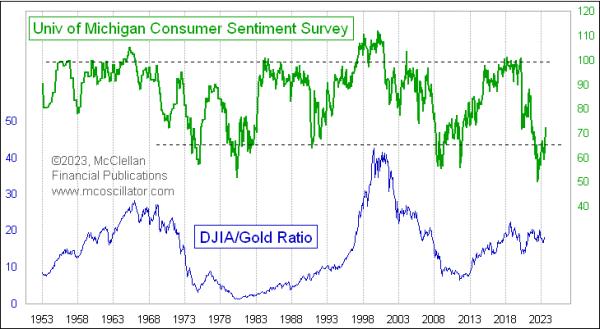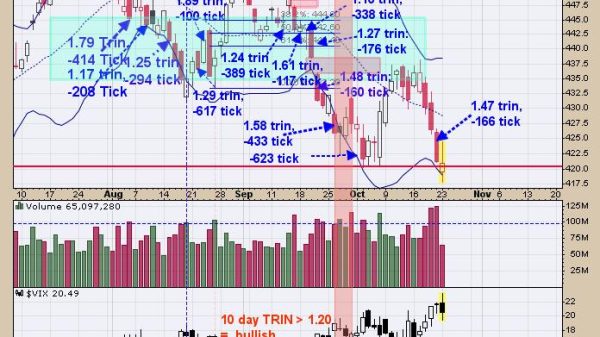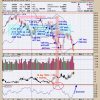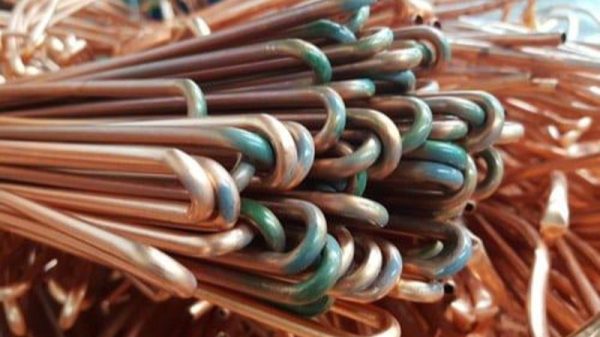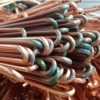For a long time, most lithium was produced by an oligopoly of producers often referred to as the Big Three: Albemarle (NYSE:ALB), Sociedad Quimica y Minera de Chile (SQM) (NYSE:SQM) and FMC (NYSE:FMC).
Rockwood Holdings was on that list as well before it was acquired by Albemarle several years ago.
However, the list of the world’s top lithium-mining companies has changed in recent years. The companies mentioned above still produce the majority of the world’s lithium, but China also accounts for a large chunk. It was the third largest lithium-producing country in 2022 in terms of mine production, behind Australia and Chile.
What’s more, Australia’s largest lithium mine, Greenbushes, is majority controlled by a joint venture between China’s Tianqi Lithium (OTC Pink:TQLCF,SZSE:002466,HKEX:9696) and Australia’s IGO (ASX:IGO,OTC Pink:IPDGF). The joint venture owns a 51 percent stake in Talison Lithium, which runs the mine, while Albemarle owns the other 49 percent stake.
China is leading the way in global lithium processing and refining, and although it is the third biggest lithium-producing country it was responsible for less than 15 percent of the world’s lithium raw material supply in 2022. However, Chinese companies are producing lithium in many other countries as well, and China has become a leader in lithium-ion battery production.
In other words, lithium investors should be aware of lithium-mining companies trading in China, as well as the Australia- and New York-listed chemical companies that produce the material. Read on for an overview of the current top lithium-producing firms by market cap. Data was current as of June 22, 2023.
1. Albemarle (NYSE:ALB)
Market cap: US$26.42 billion
Albemarle is one of the largest lithium producers in the world, with 5,000 employees and customers in 100 different countries globally. Besides lithium, Albemarle produces bromine and provides refining solutions and chemistry services for pharmaceutical firms.
When Albemarle closed its acquisition of Rockwood Holdings in early 2015, it became a lithium heavyweight. The company owns lithium brine operations in Nevada’s Clayton Valley near Silver Peak in the US, as well as in the Salar de Atacama in Chile. As mentioned, it owns a 49 percent stake in the massive hard-rock Greenbushes mine.
In 2018, Albemarle announced that its request for an increase in its lithium quota had been approved by CORFO, Chile’s Economic Development Agency, meaning Albemarle is authorized to produce up to 145,000 tonnes of lithium carbonate equivalent per year in Chile until 2043. The company’s La Negra III and IV processing facilities in Chile were inaugurated in June 2022.
Earlier this year, Chile announced its National Lithium Strategy, which will result in future lithium projects having public-private partnerships. While the government says it will respect Albemarle’s existing contract, the company is looking to begin negotiations.
Over in Australia, Albemarle signed a deal in 2019 to invest US$1.15 billion to create the MARBL joint venture with Mineral Resources (MinRes) (ASX:MIN,OTC Pink:MALRF); MARBL owns and operates the Wodgina hard-rock lithium mine in Western Australia. After previously being put on care and maintenance, Wodgina was restarted by the joint venture and saw first production in May 2022. The Kemerton I and II lithium hydroxide modules at the site had both achieved mechanical completion by the end of 2022.
In February 2023, the companies restructured their joint venture, with changes that include Albemarle increasing its interest in Kemerton I and II to 85 percent and MinRes increasing its interest in the Wodgina mine to 50 percent. Three months later, Albemarle announced it plans to build two more processing trains, which would increase production at Kemerton to up to 100,000 metric tons (MT) per year of lithium hydroxide.
As for its US operations, Albemarle received US$150 million in October 2022 to help fund a commercial-scale lithium concentrator facility in North Carolina; the money came as part of a new US battery supply chain grant program. The facility will supply lithium to the company’s upcoming Albemarle Technology Park, which will also be in North Carolina. In March 2023, Albemarle announced the location of its lithium hydroxide MegaFlex facility, which will be nearby in Chester County, South Carolina.
In late 2022, the company completed its acquisition of Guangxi Tianyuan New Energy Materials; the latter company owns the Quinzhou lithium conversion facility, which can convert 25,000 MT of lithium carbonate equivalent per year, and the Meishan plant, which should be commissioned by the end of 2024 with a capacity of 50,000 MT per year.
2. SQM (NYSE:SQM)
Market cap: US$19.18 billion
SQM has offices in over 20 countries and customers in 110 nations; overall the firm has five business areas, ranging from lithium to potassium to specialty plant nutrition. SQM’s primary lithium business is in Chile. The company has butted heads with Chile’s CORFO over its leases in the Salar de Atacama, where the company’s lithium brine operations are located, but the two parties came to a resolution in January 2018.
Chile’s new National Lithium Strategy has led to renewed talks between the two; the government has stated it will respect SQM’s current contracts, and the two entities are currently in discussions for the future.
In 2016, SQM and Lithium Americas (TSX:LAC,NYSE:LAC) said they would develop the Cauchari-Olaroz lithium project in Argentina, marking SQM’s first investment in the raw material outside of Chile. Two years later, Ganfeng purchased SQM’s stake in the project.
Outside of South America, SQM is developing the Mount Holland lithium project in Australia, which is known as one of the world’s largest hard-rock mining deposits. Mount Holland is a joint venture with Wesfarmers (ASX:WES,OTC Pink:WFAFF), which took over Australian lithium-mining company Kidman Resources.
SQM forecast that its sales volume in 2022 would exceed 140,000 MT, with only 20 percent of sales expected to be in fixed contract prices or at variable prices with specific floors and ceilings. By the end of the year, SQM surpassed its outlook by hitting 157,000 MT, with revenues from lithium and derivatives of US$8.15 billion.
3. Ganfeng Lithium (OTC Pink:GNENF,SZSE:002460,HKEX:1772)
Market cap: US$16.65 billion
Ganfeng Lithium is an important Chinese lithium producer. It is China’s largest lithium compound producer, and is one of the world’s largest lithium metal producers in terms of production capacity.
The mining company has interests in lithium resources around the world, including in Australia, Argentina, China and Ireland, but its primary source of lithium raw materials is Mount Marion in Western Australia, which is a 50/50 joint venture with MinRes.
The company listed in Hong Kong in 2018, the same year it bought SQM’s stake in Lithium Americas’ Cauchari-Olaroz lithium brine project in Argentina. In February 2020, Ganfeng upped its interest in Cauchari-Olaroz to 51 percent, taking a controlling stake in the asset. Ganfeng has supply deals with companies such as Tesla (NASDAQ:TSLA), BMW (OTC Pink:BMWYY,ETR:BMW), Korean battery maker LG Chem (KRX:051910) and Volkswagen (OTC Pink:VLKAF,FWB:VOW).
In 2021, Ganfeng continued to expand. The company agreed to buy the shares it did not already own in Mexico-focused Bacanora Lithium for US$264.5 million; it also bought a 50 percent stake in a lithium mine in Mali for US$130 million, as well as a 49 percent stake in a salt lake project in China owned by China Minmetals for 1.47 billion yuan.
In mid-2022, the company continued its purchasing spree, with its eyes set again on Argentina. Ganfeng said it would buy private company Lithea, which owns the rights to two lithium salt lakes in Salta province, for up to US$962 million.
4. Tianqi Lithium (OTC Pink:TQLCF,SZSE:002466,HKEX:9696)
Market cap: US$15.93 billion
Lithium producer Tianqi Lithium, a subsidiary of Chengdu Tianqi Industry Group, headquartered in China, is the world’s largest hard-rock lithium producer. The company has assets located in Australia, Chile and China.
In 2012, Tianqi beat out Rockwood Holdings to take control of Talison, which runs the Greenbushes mine. However, it subsequently sold a 49 percent interest in Talison to Rockwood Holdings, which, as mentioned, is now owned by Albemarle. Tianqi paid US$209.6 million for a 2.1 percent stake in SQM in September 2016, which it then boosted to 23.77 percent for US$4.07 billion in 2018.
The company has developed a lithium hydroxide plant in the Kwinana Industrial Area south of Perth in Western Australia. The facility launched production in Q3 2019, and first output took place in mid-2021.
In 2020, Tianqi sold a stake in its Australian assets to IGO in a US$1.4 billion deal, giving a boost to the then financially troubled Chinese company. The deal gave IGO a 25 percent interest in Greenbushes and a 49 percent interest in Kwinana. With lithium prices on the rise, Tianqi returned to profit in Q2 2021, posting its highest quarterly net profit since late 2018 in the third quarter.
In July 2022, the company listed in Hong Kong, raising about US$1.7 billion in its debut. Commercial production at Kwinana began in December 2022 from Train 1 of the facility, and Train 2 is expected to be commissioned in 2024. The hydroxide plant is being fed by lithium from Greenbushes, and should have a production capacity of 48,000 MT per year once both trains are online.
5. Pilbara Minerals (ASX:PLS,OTC Pink:PILBF)
Market cap: US$10.29 billion
Pilbara Minerals operates its 100 percent owned Pilgangoora lithium-tantalum asset in Western Australia, which hit commercial production in 2019. The operation consists of two processing plants: the Pilgan plant, located on the northern side of the Pilgangoora area, which produces a spodumene concentrate and a tantalite concentrate; and the Ngungaju plant, located to the south, which produces a spodumene concentrate.
In 2021, the company acquired Altura Lithium following a cash payment of US$155 million. Pilbara has partnerships with Ganfeng Lithium, General Lithium, Great Wall Motor Company (OTC Pink:GWLLF,HKEX:2333), POSCO (NYSE:PKX), CATL (SZSE:300750) and Yibin Tianyi. In June 2023, the Australian Financial Review reported that Pilbara is looking for a joint venture partner to build a US$1 billion lithium hydroxide processing plant.
Pilbara is currently working on multiple expansion projects at Pilgangoora. Its P680 expansion is for a primary rejection facility and a crushing and ore-sorting facility; commissioning for both is expected to be completed by the end of 2023, and the former should be at full capacity by then as well. The P1000 expansion is targeting raising spodumene production capacity at the site to 1,000 MT per year.
6. Mineral Resources (ASX:MIN,OTC Pink:MALRF)
Market cap: US$9.64 billion
Australia-based MinRes is a commodities company mining lithium and iron ore in the country. As mentioned, both of MinRes’ lithium mines are joint ventures with other companies on this list.
MinRes owns 50 percent of the Mount Marion lithium operation, which is a joint venture with Ganfeng Lithium. The joint venture between MinRes and NeoMetals (ASX:NMT,OTC Pink:RRSSF) commenced in 2009, but the agreement changed over the years, eventually becoming the 50/50 agreement with Ganfeng it is today. Production of lithium concentrate began at Mount Marion in 2017 and all mining is managed by MinRes, which also has a 51 percent share of the output from the spodumene concentrator at the site.
In June of this year, MinRes and Ganfeng mutually terminated their agreement to convert spodumene concentrate from Mount Marion into lithium battery chemicals, although MinRes will continue to sell its spodumene to Ganfeng. The company also announced the completion of Mount Marion’s processing plant.
The company’s other mine is Wodgina in Western Australia, which is operated under the MARBL joint venture with Albemarle. Put on care and maintenance in 2019, Wodgina entered production in May 2022 following its restart. The companies have now brought the Kemerton lithium hydroxide plant online, and it reached mechanical completion in late 2022.
As explained, the two companies restructured the MARBL joint venture in February 2023. Under the new terms, MinRes owns 50 percent of the Wodgina mine, up from 40 percent. This will be offset by Albemarle upping its interest in the Kemerton plants from 60 percent to 85 percent. The two companies also laid out how lithium supply and conversion will be handled between them; in addition, MinRes will acquire a 50 percent interest in the Qinzhou and Meishan plants from Albemarle.
7. Allkem (ASX:AKE)
Market cap: US$7.07 billion
Allkem was formed in 2021 following the AU$4 billion merger of Argentina-focused Orocobre and Australia’s Galaxy Resources. Headquartered in Buenos Aires, Argentina, Allkem is an industrial chemicals and minerals company operating a portfolio of lithium, potash and boron projects and facilities in the Puna region of Northern Argentina.
In 2014, Orocobre partnered with Toyota Tsusho (TSE:8015) and the investment division of the Jujuy government to build the Olaroz lithium brine facility at the Salar de Olaroz. The facility produced 13,000 MT of lithium carbonate in its 2022 financial year. Allkem is currently working on a stage two expansion at the facility, with first commissioning anticipated in H2 2023 followed by a two year ramp up period to 25,000 MT per year. Ultimately, the company has a long-term annual production target of 42,500 MT.
Late last year, Allkem and Toyota Tsusho completed construction of their 10,000 MT per year lithium hydroxide plant in Naraha, Japan, and a 12 month ramp-up period is now underway. The plant will process carbonate from Olaroz. Allkem is also developing its Sal de Vida lithium brine and potash project in Argentina, which has a first stage production capacity of 15,000 MT per year.
Aside from that, it owns the Mount Cattlin mine in Western Australia, which is currently producing spodumene and tantalum concentrate, as well as the James Bay lithium pegmatite project in Canada.
In May 2023, Allkem and Livent (NYSE:LTHM) announced a US$10.6 billion merger of equals between the two companies, saying it is expected to close by the end of 2023. Shareholders of Allkem will own approximately 56 percent of the new entity, whose name is currently undisclosed.
Other lithium-mining companies
Aside from the world’s top lithium producers, a number of other companies are producing this key electric vehicle raw material. These include: Jiangxi Special Electric Motor (SZSE:002176), Yongxing Special Materials Technology (SZSE:002756), Sinomine Resource (SZSE:002738), Livent (NYSE:LTHM) and Youngy (SZSE:002192).
FAQs for investing in lithium
Is lithium a metal?
Lithium is a soft, silver-white metal used in pharmaceuticals, ceramics, grease, lubricants and heat-resistant glass. It’s also used in lithium-ion batteries, which power everything from cell phones to laptops to electric vehicles.
How much lithium is there on Earth?
Lithium is the 33rd most abundant element in nature. According to the US Geological Survey, due to continuing exploration, identified lithium resources have increased to about 89 million MT worldwide. Global lithium reserves stand at 22 million MT, with production reaching 100,000 MT in 2021.
How is lithium produced?
Lithium is found in hard-rock deposits, evaporated brines and clay deposits. The largest hard-rock mine is Greenbushes in Australia, and most lithium brine output comes from salars in Chile and Argentina.
There are various types of lithium products, and many different applications for the mineral. After lithium is extracted from a deposit, it is often processed into lithium carbonate, lithium hydroxide or lithium metal. Battery-grade lithium carbonate and lithium hydroxide can be used to make cathode material for lithium-ion batteries.
What country produces the most lithium?
Global lithium production reached 100,000 MT of lithium last year, up from 82,500 MT in 2020, according to the US Geological Survey. About 74 percent of the lithium produced currently goes toward battery production, but other industries also consume the metal. For example, 14 percent is used in ceramics and glass, while 3 percent goes to lubricating greases.
The latest data from the US Geological Survey shows that the world’s top lithium-producing countries are Australia, Chile and China, with production reaching 55,000 MT, 26,000 MT and 14,000 MT, respectively.
Who is the largest miner of lithium?
The world’s largest lithium-producing mine is Talison Lithium and Albemarle’s Greenbushes hard-rock mine in Australia, which put out 37,000 MT of lithium in concentrate in 2022. Coming in second place is SQM’s Salar de Atacama operations in Chile, with 2022 production of 29,500 MT of lithium. The latter is also the world’s top-producing lithium brine operation.
Who are the top lithium consumers?
The top lithium-importing country is China by a long shot, and second place Korea is another significant importer. China is also the top country for lithium processing, and both are home to many companies producing lithium-ion batteries.
Why is lithium so hard to mine?
The different types of lithium deposits come with their own challenges.
For example, mining pegmatite lithium from hard-rock ore is known for being expensive, while extracting lithium from brines requires vast amounts of water and processing times that can sometimes be as long as 12 months. Lithium mining also comes with the difficulties associated with mining other minerals, such as long exploration and permitting periods.
What are the negative effects of lithium?
Both major forms of lithium mining can have negative effects on the environment. When it comes to hard-rock lithium mining, there have been incidents of chemicals leaking into the water supply and damaging the local ecosystems; in addition, these operations tend to have a large environmental footprint.
As mentioned, lithium brine extraction requires a lot of water for the evaporation process, but it’s hard to understand the scope without numbers. It’s estimated that approximately 2.2 million liters of water are required to produce 1 MT of lithium, and that can sometimes mean diverting water from communities that are experiencing drought conditions. This form of lithium extraction also affects the condition of the soil and air.
Will lithium run out?
Although future demand for lithium is expected to keep rising due to its role in green energy, the metal shouldn’t run out any time soon, as companies are continuing to discover new lithium reserves and are developing more advanced extraction technologies. Additionally, there are companies working on technology to recycle battery metals, which will eventually allow lithium from lithium-ion batteries to re-enter the supply chain.
What technology will replace lithium?
Researchers have been working on developing and testing a variety of lithium alternatives for batteries. Some of these options include hydrogen batteries, liquid batteries that could be pumped into vehicles, batteries that replace lithium with sodium or magnesium and even batteries powered by sea water. While nothing looks ready to replace lithium-ion batteries right now, there is potential for more efficient or more environmentally friendly options to grow in popularity in the future.
How to buy a lithium stock?
Investors are starting to pay attention to the green energy transition and the raw materials that will enable it.
When it comes to choosing a stock to invest in, understanding lithium supply and demand dynamics is key, as there are unique factors to watch for in lithium stocks. The main demand driver for lithium is what happens in the electric vehicle industry, which is expected to keep growing, and also the energy storage space. Analysts remain optimistic about the future of lithium, with many predicting the market will be tight for some time.
Investors interested in lithium stocks could consider companies listed on US, Canadian and Australian stock exchanges. They can also check out our guide on what to look for in lithium stocks today.
Securities Disclosure: I, Priscila Barrera, currently hold no direct investment interest in any company mentioned in this article.
Securities Disclosure: I, Lauren Kelly, currently hold no direct investment interest in any company mentioned in this article.

